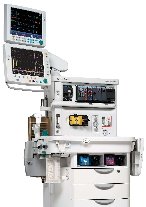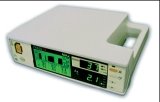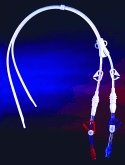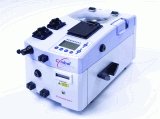It's curtains for Darvon (Propoxyphene)
The FDA said Friday that Xanodyne Pharmaceuticals had agreed to halt all U.S. marketing of Darvon and the related brand Darvocet, which contain the drug propoxyphene. The agency also called on generic drugmakers to stop marketing low-cost drugs containing propoxyphene. Propoxyphene, which was approved in the 1957, is an opioid narcotic used to treat mild to moderate pain. About 10 million people in the U.S. received prescriptions for Darvon and related drugs in 2009, according to the FDA. The most popular form of the drug currently is Darvocet, which combines propoxyphene with the more common painkiller acetaminophen. At an FDA meeting in 2009, officials cited studies showing most of the pain relief from Darvocet came from the acetaminophen. Other commonly prescribed drugs in the same class are oxycodone and codeine.FDA Approves First Intravenous Formulation of Acetaminophen
The US Food and Drug Administration (FDA) has approved the first and only intravenous formulation of acetaminophen (Ofirmev; Cadence Pharmaceuticals, Inc) for the management of mild to moderate pain with or without adjunctive opioid analgesics, and the reduction of fever. FDA approval was based on data from a 3-study clinical trial program of 1020 adult and 355 pediatric patients. Intravenous acetaminophen should be administered only as a 15-minute infusion. As with other formulations of acetaminophen, the daily dose should not exceed 4 g because of the potential for potentially severe hepatotoxicity. Adverse events most commonly reported in adult clinical trials included nausea, vomiting, headache and insomnia; nausea, vomiting, constipation, pruritus, agitation, and atelectasis were most commonly reported in pediatric patients.http://www.medscape.com/viewarticle/731994?src=mp&spon=46&uac=96018SR
Triton Infusion Pumps Recalled
A voluntary nationwide recall has been issued for a total of 2018 Triton Pole Mount infusion pumps (WalkMed Infusion, LLC) because of potential errors in the door open alarm, the company said Friday in a news release. Affected devices may not alert the user to improper door closure and latching, potentially allowing pump failure to remain undetected unless tube set flow is checked before activation. Pump failure can cause a gravity feed flow condition leading to overinfusion of medication.FDA Orders Recall of All Baxter Colleague Infusion Pumps
Problems since 1999 with the Colleague Volumetric Infusion Pumps (Baxter Healthcare Corp) have prompted the US Food and Drug Administration (FDA) to order the recall of all of an estimated 200,000 pumps currently in use. Changes made to the pumps since that time failed to satisfy the standards requested by the FDA, and a proposed correction schedule issued by the company in April 2010 indicated that the latest round of corrections would begin in May 2012 and be completed by 2013.
http://www.medscape.com/viewarticle/721251

Aisys
Aisys is one of the most complete anesthesia solution yet. Excellent ventilation and full range of vital signs monitoring are at the heart of the Aisys anesthesia delivery system. The Aisys is built on Datex-Ohmeda legacy of anesthesia delivery and patient monitoring technology. It has incorporated innovative features to help provide the personalized care the patients deserve. Et Control is an optional gas delivery mode for the fully digital Aisys® Carestation® from GE Healthcare. With Et Control the clinician sets the target EtO2 and EtAA values, the system constantly monitors the patient’s EtO2 and EtAA values and automatically adjusts the gas delivery and total flow to achieve and maintain the set target values. Intelligent inbuilt safeguards protect against over-delivery and under-delivery of agent and hypoxia – while providing the clinician with peace of mind and total control at all times.info@acutronic-medical.ch
Anaesthesia Roll Labels

Anaesthesia Roll Labels. The new PharmaTags roll labels are colour-coded and preprinted to help prevent medication errors. The generous dimensions of the labels and the easy-to-read bold print allow comprehensive marking and clear identifi cation. The easyto-use tags are coated with a strong adhesive. Colour coding meets ASTM, JCAHO, FDA and ISMP guidelines. Supplied in rolls of 500 individual labels.
Anaesthesia Roll Labels
Sharn, Inc.
mailbox@sharn.com
Gas Analyser for Routine Clinical Use

Gas Analyser for Routine Clinical Use. MAx is specially designed for monitoring of adults, children and infants in anaesthesia and intensive care. With a clear, easy-to-view display and an intuitive interface,
vital information is easily accessed. The analyser is equipped with a comprehensive alarm system comprising both visual and audible warning signals. A standard
battery back-up ensures two hours of uninterrupted operation. The system incorporates InfraRed Mainstream
Analyser (IRMA) technology and does not require any routine calibration, thus reducing operating expenses. Simply connect an IRMA probe, turn the power on and start measuring. IRMA probes are available in a wide
choice of configurations from a simple CO2-only version, to the most comprehensive probe offering CO2, O2, N2O and five anaesthetic agents. The gas analyser can be easily upgraded to meet future requirements.
Phasein AB
info@phasein.se
New insulated needles for peripheral nerve block procedures

New insulated needles. The ProBloc S single-shot needles are designed to facilitate nerve location and injection of a local anaesthetic into a peripheral nerve site. The needles have a biocompatible insulation coating that provides a smooth exterior finish for easy insertion. The coating is removed from the tip of the needles to allow the current from the nerve locator to travel down the needle and out the end, directly into the site of the targeted nerve.
The needles are available in five different sizes and include an integrated stimulating lead wire and attached injection set.
New insulated needles
Smiths Medical
info@smiths-medical.com
Automated blood collection system

Automated blood collection system. Red cells represent the most frequently transfused blood component. Historically, red cells have been manually separated from whole blood, yielding one transfusable dose of red cells from one blood donation. Automation improves the efficiency, reliability and cost-effectiveness of blood collection. The Cymbal next-generation automated red cell collection system, which received the CE mark in February 2006, is compact in size, battery-operated and easy to use. The system is currently CE approved for non-leukoreduced indications for autologous, allogeneic and therapeutic collections and is being sold in France, Germany, Austria and the Czech Republic. Automated blood collection system
Haemonetics International